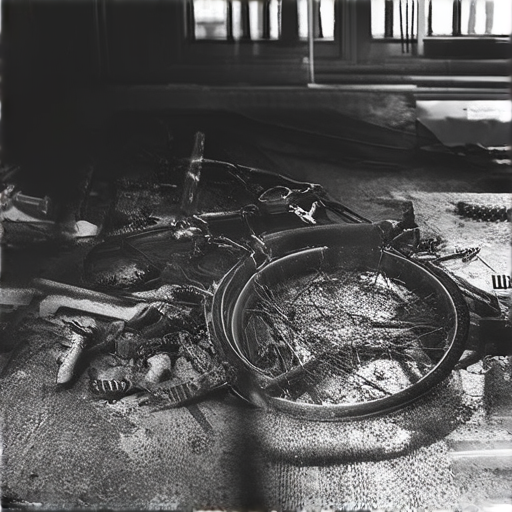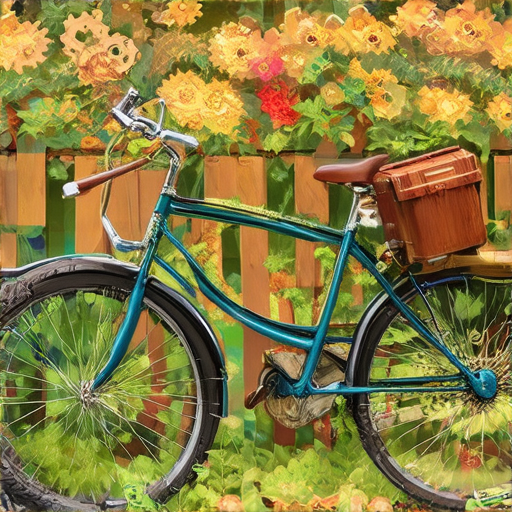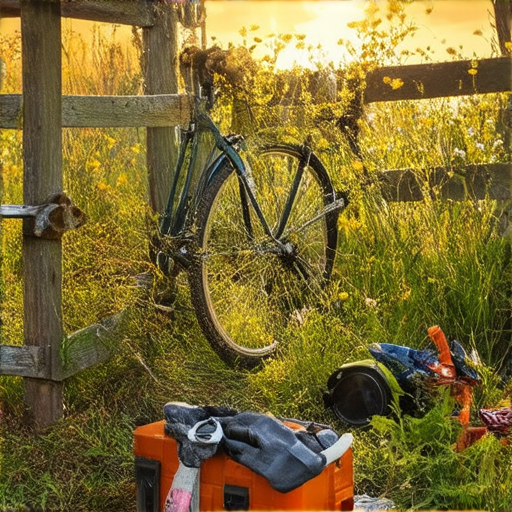Biking is a popular mode of transportation and recreation, but it requires regular maintenance to keep your ride running smoothly. As a beginner, understanding the importance of bike maintenance can seem overwhelming, but it’s essential to know what tasks need to be performed regularly to extend the life of your bike and ensure safety on the road. From checking tire pressure to lubricating chain components, we’ll cover the basics of bike maintenance and provide a comprehensive guide to help you get started.
By following our expert advice, you’ll learn how to perform a basic bike service, identify common issues caused by neglecting maintenance, and understand the benefits of regular bike maintenance. We’ll also explore specialized bike maintenance services, bike maintenance safety precautions, and provide resources for further learning and support. Whether you’re a seasoned cyclist or just starting out, this guide is designed to empower you with the knowledge and skills needed to keep your bike in top condition.
With our step-by-step approach, you’ll gain confidence in performing routine maintenance tasks and become more aware of the importance of bike maintenance. By the end of this article, you’ll be equipped with the tools and expertise necessary to keep your bike running smoothly, ensuring years of enjoyable rides ahead.

Bike Maintenance Schedule: A Comprehensive Guide
- Monthly Checks:
- Check tire pressure and adjust as needed.
- Inspect brake pads and replace if worn down to 1/8 inch.
- Check chain lubrication and apply as necessary.
- Inspect and clean the derailleurs and cables.
- Check the quick release and bolt torque.
Quarterly Tasks:
- Deep clean the frame and wheels.
- Apply a rust-inhibiting coating to metal components.
- Check and replace the air filter.
- Inspect the headset and bottom bracket for play.
Semi-Annual Tasks:
- Replace the brake pads completely.
- Replace the chain and cassette.
- Inspect and replace the tires if worn out.
- Check and adjust the seatpost and handlebar stem.
Annual Tasks:
- Perform a thorough cleaning of the entire bike.
- Apply a protective coating to the chainrings and sprockets.
- Check and replace the water bottle cage and cage clips.
- Inspect the pedals and replace if worn out.
Additional Tips:
Regular maintenance is essential to extend the lifespan of your bike and ensure optimal performance.
Keep track of your maintenance schedule to avoid neglecting important tasks.
Consider consulting a professional mechanic for complex repairs or maintenance.
Bike Service Basics: What to Expect
A basic bike service is a fundamental maintenance routine that ensures your ride runs smoothly and efficiently. Here’s what you can expect from a typical basic tune-up:
- Chain Cleaning and Lubrication: A thorough chain cleaning removes dirt, grime, and old lubricant, allowing for a fresh coat of grease to keep your chain running quietly and smoothly.
- Gear Indexing and Adjustment: Proper gear indexing ensures smooth shifting between gears, reducing wear and tear on your drivetrain components.
- Brake Pad Inspection and Replacement: Inspect brake pads for wear and replace them if necessary to maintain optimal stopping power.
- Tire Pressure Check and Adjustment: Verify tire pressure according to the manufacturer’s recommendations to ensure proper inflation and prevent flat spots.
- Quick Release or Bolt Tightening: Securely tighten quick releases or bolts to prevent wheel damage or loss during rides.
- Cable Adjustments: Fine-tune cable tension to optimize shifting and braking performance.
- Wheel Truing: Ensure wheels are properly aligned and trued to prevent uneven tire wear and improved handling.
By incorporating these essential services into your regular bike maintenance routine, you’ll extend the lifespan of your bike, enhance its performance, and enjoy a safer riding experience. Regular servicing also helps identify potential issues before they become major problems, saving you time and money in the long run.
The Number One Rule for Bicycles
Riding a bicycle safely and responsibly involves understanding and adhering to local traffic laws and regulations.
Key Principles of Safe Cycling
- Positioning on the Road: When possible, cyclists should ride as far to the right as feasible, allowing motorists to pass safely.
- Exceptions and Considerations: However, there may be situations where riding closer to the center of the lane is necessary, such as when navigating tight corners, merging onto busy roads, or avoiding hazards.
Understanding California Bicycle Laws
In California, specifically, cyclists are required to ride as close to the right-hand side of the road as possible, except under certain circumstances:
- Passing: Cyclists can ride closer to the center of the lane when passing other vehicles, but they must yield to oncoming traffic and signal their intentions.
- Preparing for Turns: When turning left, cyclists should move into the center of the lane to ensure safe passage and visibility.
- Avoiding Hazards: In situations where a hazard exists, such as potholes or debris, cyclists may need to adjust their position to avoid these obstacles.
- Narrow Lanes: If the lane is too narrow to accommodate multiple users safely, cyclists should take turns occupying the space.
- Approaching Intersections: At intersections, cyclists should follow standard traffic rules and signals, yielding to pedestrians and motorized traffic as needed.
Best Practices for Safe Cycling
By understanding and applying these principles, cyclists can minimize risks and contribute to a safer cycling environment.
- Be Visible: Wear bright clothing and use lights to increase visibility, especially during low-light conditions.
- Follow Traffic Rules: Obey all traffic signs, signals, and laws, just as motorists do.
- Anticipate Hazards: Be aware of potential hazards, such as potholes or debris, and adjust your position accordingly.

Bicycle Tune-Up: Comprehensive Overview
A bicycle tune-up is a crucial maintenance task that ensures your bike runs smoothly, efficiently, and safely.
Components Involved in a Bicycle Tune-Up
- Gear adjustment and fine-tuning
- Brake pad replacement and adjustment
- Lubrication of the chain and derailleurs
- Tire pressure check and inflation
- Wheel truing and alignment
- Bottom bracket inspection and adjustment
- Headset inspection and adjustment
- Hubs inspection and lubrication
- Frame cleaning and inspection
Importance of Regular Bicycle Tune-Ups
A regular tune-up helps prevent mechanical issues, reduces wear and tear, and extends the lifespan of your bike components.
- Prevents chain wear and breakage
- Ensures smooth gear shifting and braking
- Reduces risk of accidents due to faulty brakes or gears
- Saves time and money by catching potential problems early
Additional Services Offered During a Bicycle Tune-Up
Some bike shops may offer additional services during a tune-up, such as:
- Chain cleaning and replacement
- Pedal and crank arm adjustments
- Quick release lever adjustment
- Seat post and handlebar adjustments
DIY vs. Professional Bicycle Tune-Up
While some cyclists prefer to perform DIY tune-ups, others opt for professional services due to the complexity of modern bikes and the need for specialized tools.
- DIY benefits: cost-effective, convenient, and empowering
- Professional benefits: expertise, specialized tools, and warranty coverage
Conclusion
A bicycle tune-up is essential for maintaining your bike’s performance, safety, and longevity.
Bicycle Tune-up Checklist
- Brake System: Inspect brake pads for wear, replace if necessary, and adjust brake calipers.
- Cable Lubrication: Apply lubricant to cable housings and adjust brake and gear cables for proper tension.
- Wheel Trueness and Spoke Tension: Check wheel trueness and adjust spokes for proper tension to prevent damage.
- Hub Adjustments: Check and adjust hub bearings for smooth rotation and proper alignment.
- Tire Inflation and Removal: Inflate tires to recommended pressure, inspect for damage, and remove old tire casings.
- Seat Post Greasing: Clean and grease seat post to ensure smooth operation.
- Chain Maintenance: Inspect chain for wear, clean and lube chain, and adjust derailleurs for proper alignment.
- Quick Release Levers: Tighten quick release levers securely to prevent wheel loss.
- Derailleur Adjustment: Adjust derailleur hangers and limit screws for precise shifting.
- Pedal and Crank Maintenance: Clean and lube pedals and crank arms, and inspect for wear.

Pedal Bike Service: A Comprehensive Overview
A pedal bike service is a thorough maintenance procedure designed to ensure your bicycle runs smoothly, efficiently, and safely. While the specifics may vary depending on the type of bike, here’s a general outline of what you can expect during a typical pedal bike service:
- Drivetrain Inspection and Maintenance
- Remove and clean the drivetrain components, including the chainrings, cassette, and chain.
- Inspect the drivetrain for wear and tear, replacing worn-out parts as needed.
- Adjust and fine-tune the derailleurs to ensure proper shifting performance.
- Inspect the brake pads and rotors for wear, replacing them if necessary.
- Check the brake cable tension and adjust as required.
- Test the brakes to ensure they’re functioning properly.
- Inspect the wheels for trueness and adjust the spokes as needed.
- Check the tire pressure and adjust the valve stems accordingly.
- Tighten the quick-release skewers or nuts to ensure secure wheel attachment.
- Inspect the shifters and index system for proper function.
- Adjust the limit screws and cable tension to optimize shifting performance.
- Test the shifters to ensure smooth and precise shifting.
- Apply a suitable chain lube to keep the drivetrain running smoothly.
- Clean the drivetrain components to prevent dirt and grime buildup.
- Perform a final inspection to ensure all components are working properly.
- Take the bike for a test ride to ensure everything is functioning as expected.

0 Comments